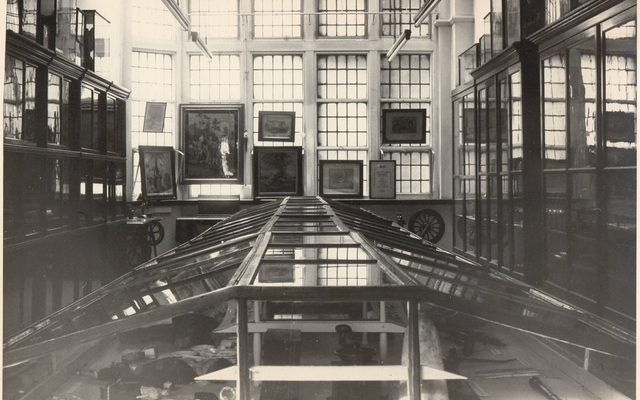
History of Craven Museum
Founding of Craven Museum
History and archaeology enthusiasts in Craven had been organising for several years to form a museum in Skipton. In 1927 the Craven Naturalists and Scientific Association appointed a new committee to form Craven Museum.
Among those involved in setting up the museum were noted geologist and archaeologist Arthur Raistrick, Francis Dufty who was a teacher at Ermysted’s Grammar School, and John Fielden who owned a gentlemen’s outfitters in Skipton.
A room above Skipton Library was already being used by the Craven Naturalists to house the finds from Reverend E. Jones’ Elbolton Cave excavation, and it was agreed that the space could be used for the new museum.
After a letter campaign in the Craven Herald and donations from the Mechanics Institute and others, enough money and objects had been amassed for Dufty to begin listing the objects and organising the display cases.
Craven Museum was opened on 7th July 1928, and there was a formal ceremony on 6th October 1928. The museum committee invited Sir Henry Miers, President of the Museums Association, and in his speech he praised the museum for its focus on the local culture and history of Craven.
Founding collections for the museum included the Elbolton Cave finds, Roman artefacts from Elslack fort, and a fossil collection. The museum was open from 2pm-4pm on Saturday afternoons and staffed by members of the museum committee.

Handing over of the museum to SUDC, 1934 © Skipton Town Hall

Craven Museum displays in the Library basement © Skipton Town Hall
Growth of the museum
Shortly after its opening, the museum was extended into a second room in the basement of Skipton Library. In 1934, responsibility for the museum was taken on by Skipton Urban District Council, which ensured the future survival of the museum. David Etty the librarian also became the curator of the museum.
Throughout the 20th century, the museum continued to obtain new exhibits and expand its displays. In 1973, the museum was moved to its current home in Skipton Town Hall, and the council hired its first professional curator, Jane Harding. The Friends of Craven Museum, who were formed in 1969, were heavily involved in moving all the museum objects to their new premises.
One of the most exciting chapters in the museum’s history was in 2003 when a copy of Shakespeare’s First Folio was discovered in the museum collection. It had previously been thought to be only a Second Folio, but once its identity was confirmed, it was subsequently put on permanent display for visitors.
Redevelopment of Skipton Town Hall
In 2019, Skipton Town Hall including Craven Museum, was closed for an extensive redevelopment project. The museum was completely redesigned and reinterpreted, and moved to the ground floor of the building. There was a focus on accessibility and increasing the number of objects from the museum collection on display.
As part of the redevelopment process, public consultation was carried out and seven major themes were pulled out to become display sections in the new museum. These included caving, working life, the natural world, and travel, transport, and trade. An area was also created to display items from the collections of some of the museum’s founders.
The museum reopened to the public in summer 2021 and continues to tell the story of the Craven area to visitors through objects in our collection. Since then, the newly developed museum has won a number of awards, including the Kids in Museums Family Friendly Museum Award 2023, and were finalists for the Art Fund Museum of the Year Award 2024.

Craven Museum after redevelopment © Skipton Town Hall


